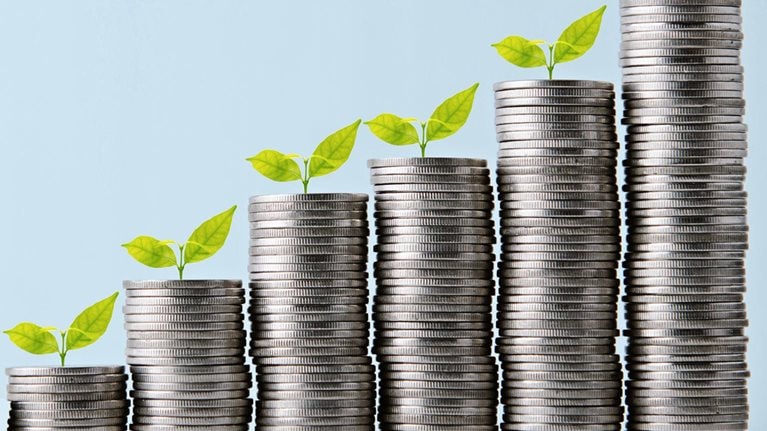Executives around the world are more positive than negative about the state of the economy for the first time in more than a year, according to the latest McKinsey Global Survey on economic conditions.1 Respondents are more optimistic about the current state of their own countries’ economies (48% say economic conditions at home have improved in the past six months, up from 40% last quarter) as well as the global economy (Exhibit 1).

India is notably positive: respondents are much more bullish about their economy, with 85% saying conditions have improved compared to six months ago, up from 46% in March.
At the same time, inflation and geopolitical instability continue to top the list of perceived risks to global and domestic growth: 35% of respondents cite inflation as a risk to economic growth in their country, while 34% flag geopolitical instability and conflict. However, perspectives on the interest rate environment are evolving, with 21% identifying rising interest rates as a risk. Currently, the smallest share of executives since June 2021 is expecting interest rates to increase in their countries.
Meanwhile, consumer confidence has gradually been improving, but remains patchy and low. Spending across countries has softened, with the exception of Russia. Inflation continues to ease across the board, but core inflation remains at uncomfortable levels. However, producer prices in developing economies are declining, which will further alleviate pressure on consumer prices. In the US, inflation expectations came down from highs observed in 2022 and are close to the US Federal Reserve’s targets.
The Fed decided not to hike the federal funds rate and maintained the target range at 5.00–5.25%, breaking a ten-meeting streak of rate rises, but it did raise the interest rate paid on reserve balances to 5.20%. This was in contrast to the European Central Bank (ECB), which raised its key interest rate by 25 basis points to 3.5%, and the Bank of England, which increased its policy rate by 50 basis points to 5.0% in June. The Reserve Bank of India also kept its key policy rate (repo rate) unchanged in June at 6.5% (Exhibit 2).

Global GDP growth in 2023 is projected to be 2.7%, the lowest annual rate since the global financial crisis, picking up modestly to 2.9% in 2024 according to the OECD’s June outlook. The OECD’s leading indicators for developed economies remain disappointing, with US and eurozone levels indicating a downturn while the UK trajectory points to a recovery. However, all three regions are still below the long-term trend in industrial production. According to the OECD’s June 2023 outlook, UK GDP growth is expected to be modest at 0.3% in 2023 and rise moderately to 1.0% in 2024. Meanwhile, June 2023 European Central Bank projections anticipate GDP growth in the eurozone to slow to 0.9% in 2023 (versus 3.5% in 2022) before rising to 1.5% in 2024 and 1.6% in 2025. By contrast, the emerging economies are showing the first signs of a rebound led by China, where industrial output growth was 3.5% year-over-year in May, decelerating from 5.6% in April.
Manufacturing and services sector performances continue to tell two contrasting stories: the global services sector gained some momentum at the beginning of the second quarter of 2023, while the manufacturing sector contracted again, now showing a decline for three consecutive quarters. Factories have signaled increased production, yet deteriorating new orders and international trade flows raise concerns about demand. Nevertheless, there are some bright spots for manufacturing: input prices have been falling for the first time since 2020, while global supply chain pressures have eased in one of the biggest drops since 1998.
Would you like to learn more about the McKinsey Global Institute?
In the US, the industrial production index remained unchanged in April, standing at 103. The purchasing managers’ index (PMI) for manufacturing rose to 49.3 in March from 47.3 in February, while the services PMI increased to 52.6. Meanwhile, in the eurozone, the manufacturing PMI dropped slightly to 52.8—a flash estimate for May—compared to 54.1 in April, a three-month low. The services PMI broke into expansion territory in January (50.8) and leveled off in May (55.1). By contrast, India’s manufacturing PMI hit a 31-month high in May, positioned solidly in expansion territory at 58.7 (compared to 57.2 in April), while the services PMI recorded a month-over-month decline of 1.3% to stand at 61.2, also remaining well within the expansion zone.
Unemployment rates rose in the US (3.7%, slightly higher than 3.4% in April) and India (7.7%) while remaining practically unchanged in China and the eurozone. The labor market remains relatively tight in the UK, with unemployment rates lower than prepandemic levels despite the quarterly rate for April 2023 ticking up to 3.8%. Meanwhile, pressure to increase wages in Russia continues due to a tight labor market.
Stock exchanges across countries presented a mixed picture, with month-on-month declines in China, France, and the UK across April and May but with stronger performances in Brazil, Germany, India, and especially Japan. In the US, May’s S&P500 year-to-date returns were up 8.9%, while the Dow Jones was down 0.7%, positioning May as the month in which we are seeing the first negative year-to-date returns on a US index. Meanwhile, most currencies appreciated against the US dollar.
One area of concern for economies globally revolves around recent events in Russia. While market reactions to the Wagner Group’s short-lived armed rebellion (which started on June 23) have been noticeably subdued—the ruble–dollar exchange rate climbed from ₽81 to ₽86 per US dollar over the seven days to June 29—worries have emerged related to potential disruptions to wheat supplies and volatility in energy prices. Markets are likely watching closely to obtain clarity on how the situation will develop over coming weeks.
In April, the Container Throughput Index stood at 121.1 points, up from the previous month (119.2 points revised). European throughput saw a slight recovery, while Chinese ports continue to strengthen. The eurozone trade balance had been positive since February but exports fell In April, and the trade deficit was €11.7 billion, compared to a €23.5 billion surplus in March. Overall cross-border trade dropped for China in May, declining by 6.2% year-over-year (compared to 1.1% in April). India’s trade deficit widened as exports declined by 10.3% on an annual basis in May (although up 1.0% month-over-month) to $34.98 billion amid global demand challenges.
McKinsey’s Global Economics Intelligence (GEI) provides macroeconomic data and analysis of the world economy. Each monthly release includes an executive summary on global critical trends and risks, as well as focused insights on the latest national and regional developments. Detailed visualized data for the global economy, with focused reports on selected individual economies, are also provided as PDF downloads on McKinsey.com. The reports are available free to email subscribers and through the McKinsey Insights App. To add a name to our subscriber list, click here. GEI is a joint project of McKinsey’s Strategy and Corporate Finance Practice and the McKinsey Global Institute.



